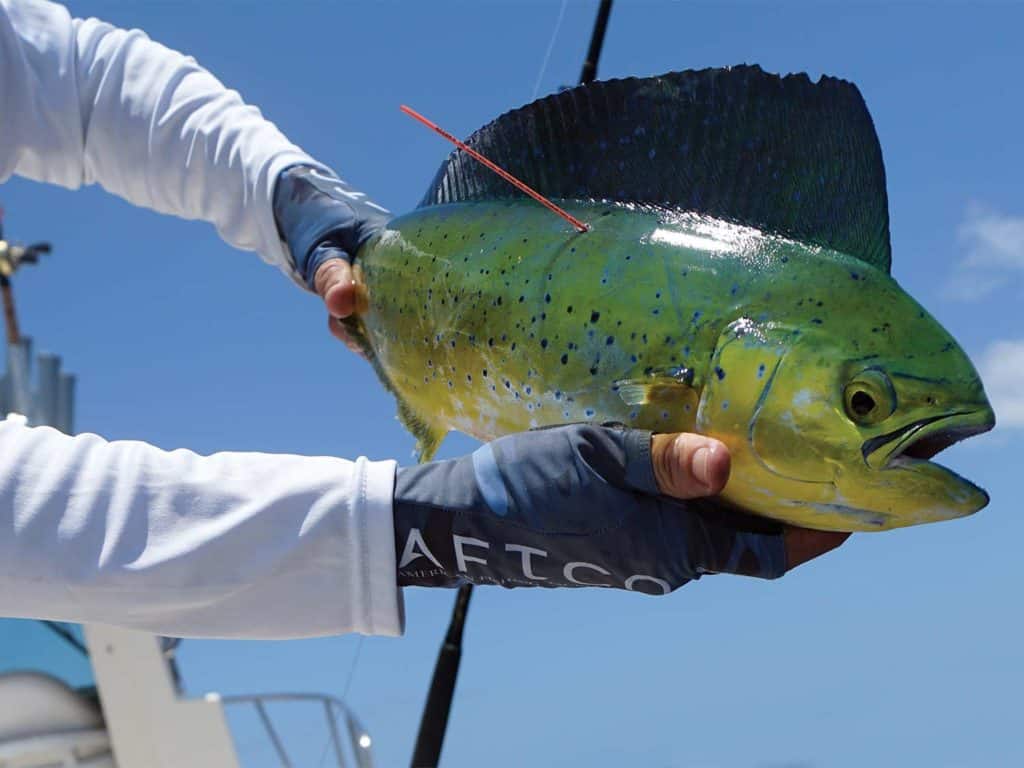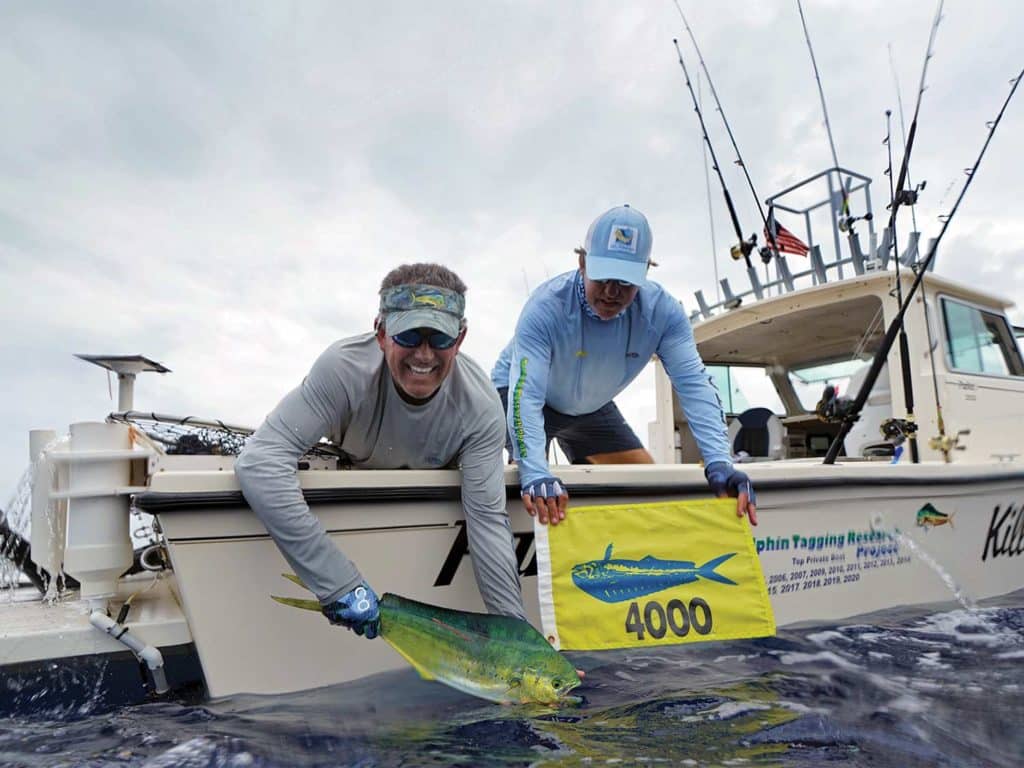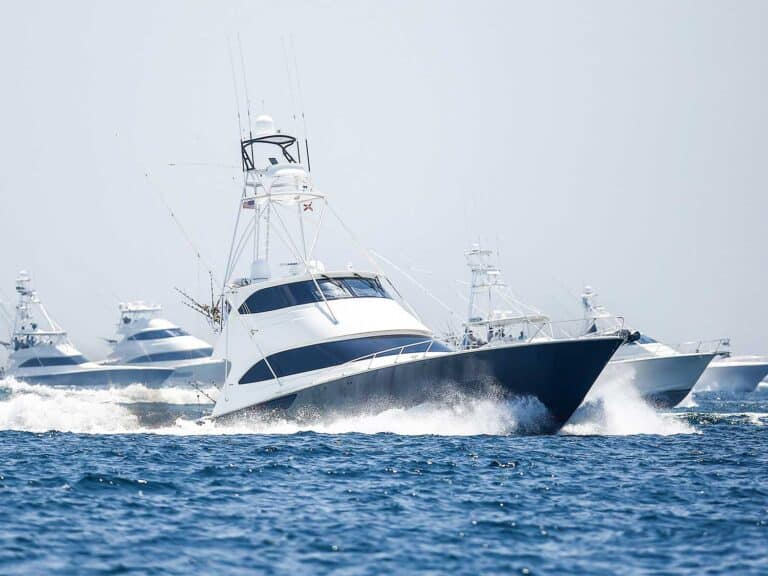
Many recreational anglers will not catch 4,000 dolphin in their lifetime, let alone tag and release that same number in the name of conservation and science. Working with the Dolphinfish Research Program since its inception, Capt. Don Gates and the Killin’ Time II fishing team achieved that impressive milestone this summer.
For recreational anglers, this tagging program provides the best opportunity to understand a vitally important fishery, crucial to not only countless recreational anglers along the entire Eastern Seaboard, but to an incredibly wide array of bluewater predators as well. The program has been remarkably successful in revealing new information on the mahi population in the Atlantic Ocean and Caribbean Sea.
Watch: Marlin in the dredge!
By the Numbers
While the DRP has been extremely successful in its 20-plus years, it has been so only through the efforts of more than 1,700 privately owned vessels and more than 5,500 anglers resulting in more than 29,300 tagged fish. While every tagged fish is important, the Killin’ Time II crew has tagged an extraordinary amount of fish. Gates began participating in the program in 2002 and is now retired, residing in Cudjoe Key, Florida.
Over the years, Gates and crew had witnessed changes in their dolphin catch —the reason why they began participating in the DRP. “Since I began fishing for dolphin in the Keys in the 1990s, we would catch larger dolphin more often than today,” Gates says. “This concerns me because if there weren’t dolphin, then I would not be an offshore fisherman.”
It took Killin’ Time II 207 outings, averaging 19 fish released per trip, to amass 4,000 releases. They have tagged more than 70 mahi in one day on 11 different occasions, and on one outing in 2020, they tagged a staggering 128. The team tags an average of 200 dolphin per year and has tagged 300 or more fish in six separate years—the best being in 2017, when they tagged 424 fish, outpacing the all-time record of 415 dolphin tagged in one year set by Don Brown’s crew on Draggin’ Dreams in 2005.
It’s important to note that this isn’t just a numbers game. Killin’ Time II is careful to handle every fish gently, returning them to the water as quickly as possible. Their conscientious tagging methods have resulted in 180 of their fish being successfully recovered, with as many as 29 being rediscovered in a single year, for an overall recovery rate of 4.5 percent, which is almost twice the overall recovery rate for the program. Off the Florida coast, 146 of Gates’ dolphin have been recovered, with 22 off the Carolinas, six in the Bahamas and the Caribbean.

Learning Opportunities
“When we started tagging for the DRP in 2002, we had no idea about the fish’s movements, seasonality or schooling dynamics, so when we learned about the program at a Central Florida Offshore Anglers meeting, we wanted to help change that,” Gates says. “We figured since we were fishing anyway, we would give tagging a try, and it turned out to be a lot of fun, enabling us to make a significant impact to better understand the life history of this amazing gamefish.”
Gates’ tagging efforts have also revealed that some dolphin released off the Florida Keys will return to the Florida coast in less than six months. This important finding supports the regulation requiring fish under 20 inches to be released, suggesting that Florida fishermen could benefit from this conservation measure in as little as six months because an opportunity to catch larger fish would then exist. This data also demonstrates that East Coast anglers will benefit by releasing small dolphin in order to provide the fish an opportunity to return the following year as gaffer-size dolphin. While their efforts are admirable, Gates and his team are not the only ones who are taking their DRP-tagging activities to another level.
Wam-Jam, privately owned and operated by David Wamer and Charlie Jamison, recently tagged and released their 500th dolphinfish off Marathon, putting them among a half-dozen other vessels that have dedicated time to tag and release more than 500 dolphin for the DRP. Charter vessels, such as the Miami-based Thomas Flyer, operated by Capt. Jimbo Thomas and his brother, Rick, have been tagging fish for the DRP since 2005. In 370 outings, with an average of eight fish released per outing, the Thomases reached a milestone of 2,850 tagged dolphin this past June.
Each year, Thomas Flyer averages 170 program-tagged dolphin, with 2007 being their best year, tagging 342. Their efforts have earned them the DRP Top Charter Boat award numerous times since entering the program. Thomas Flyer’s release average is 18.44 inches, but 10 percent are actually larger than Florida’s legal limit, with some mahi as large as 30 inches tagged and released.
Dedication
These teams are clearly dedicated to the conservation of this species, and thanks to those efforts, we have been able to track fish from Palm Beach to New Jersey, the Bahamas, the Dominican Republic and Cuba. This past summer, an 18-inch fish released on June 23 was recaptured off Lake Worth Inlet after 205 days at large, likely in its second lap along the US East Coast, and while we have not been able to confirm the exact size of the fish when it was recaptured, the time at liberty suggests it had grown from a 2-pound peanut to a 14.5-pound adult. Gates and the Thomas brothers are to be commended for their contributions to the scientific understanding of dolphin in the western central Atlantic Ocean.
Read Next: Everyone needs a few good knives for fishing. Here are our top choices.
The Dolphinfish Research Program was formed in 2002 and sends tagging kits to anglers all over the world to engage them in offshore-fisheries research on dolphin. While the future of the DRP looks bright, when it comes to government-financed research, dolphin have not been made a priority despite the species being one of the most targeted in the South Atlantic Bight, Caribbean Sea and Gulf of Mexico. As a not-for-profit organization, the DRP relies on private donations, contributions by sport-fishing clubs such as Central Florida Offshore Anglers and West Palm Beach Fishing Club, as well as grants from key industry players such as AFTCO, Guy Harvey Ocean Foundation, Grady-White Boats, SiriusXM Marine and maritime attorneys Perry & Neblett, in addition to support for the year-end tagging-awards program from Star Rods and Costa. To learn more about the Dolphinfish Research Program, make a tax-deductible donation, report a recapture or sign up for a free tagging kit, please visit beyondourshores.org.







